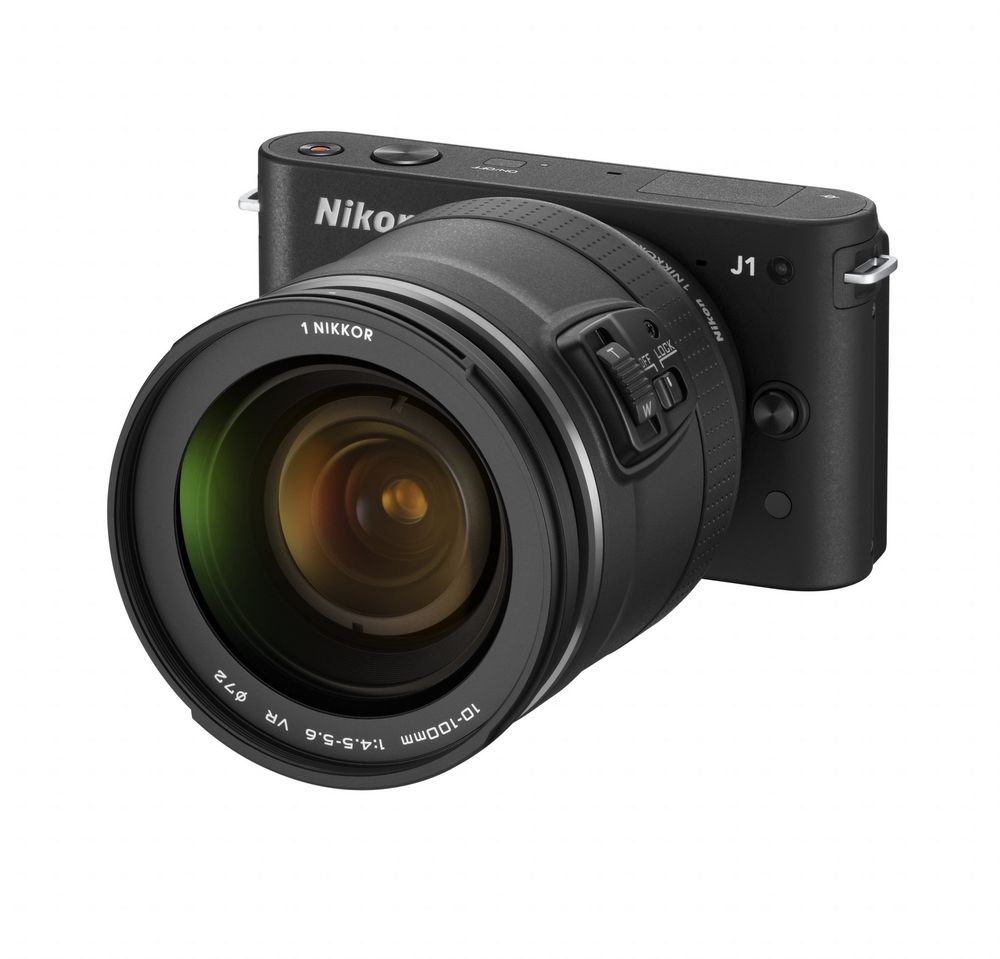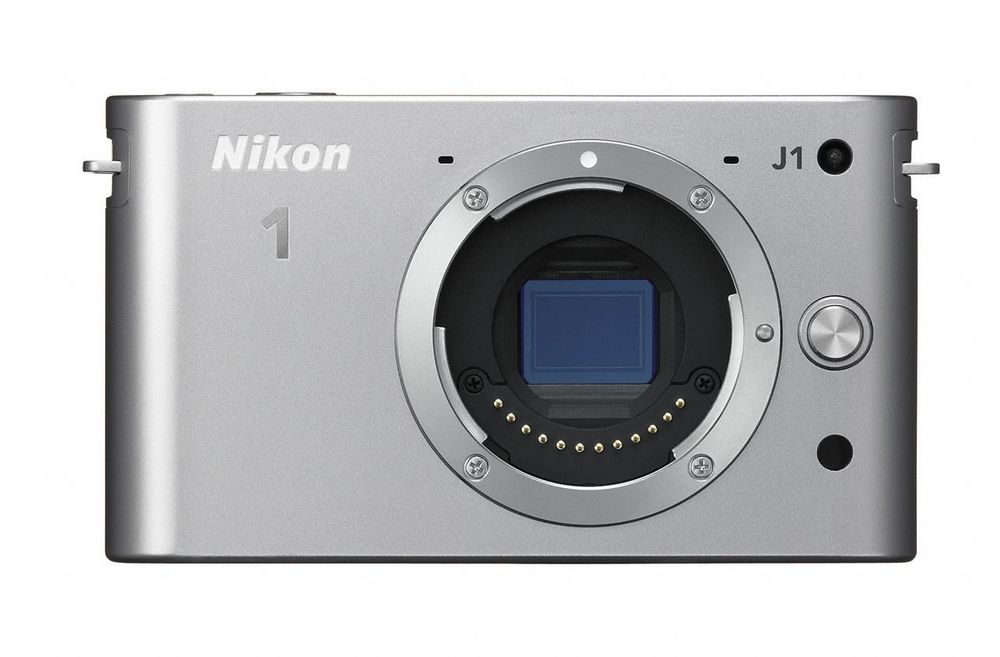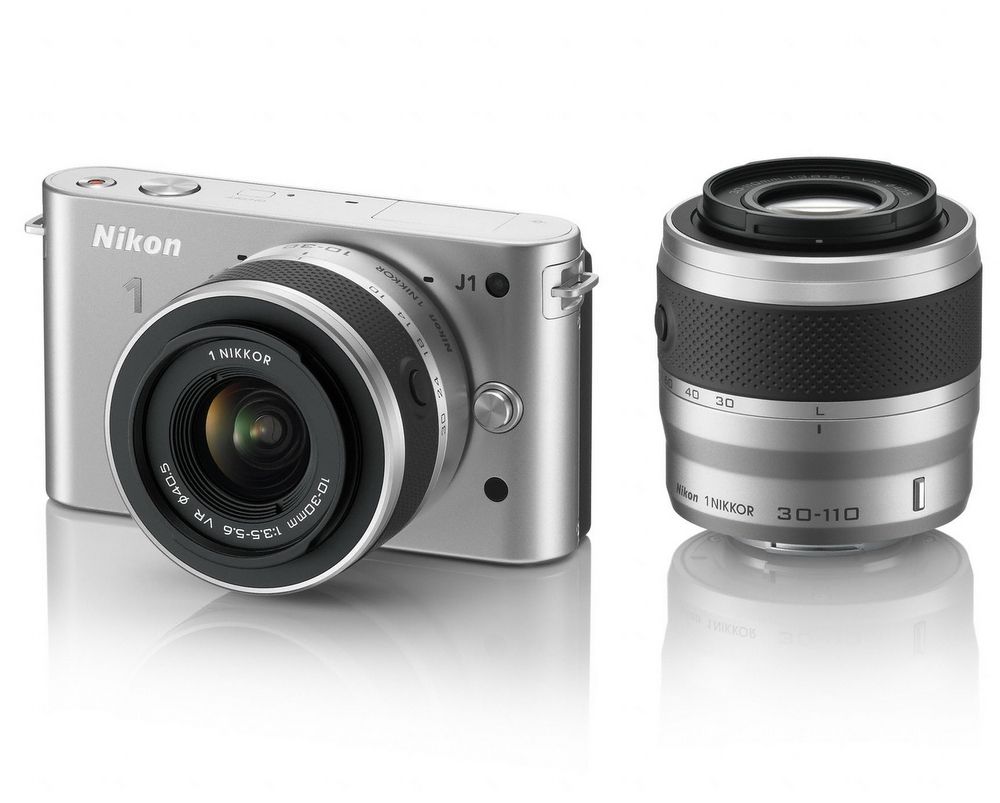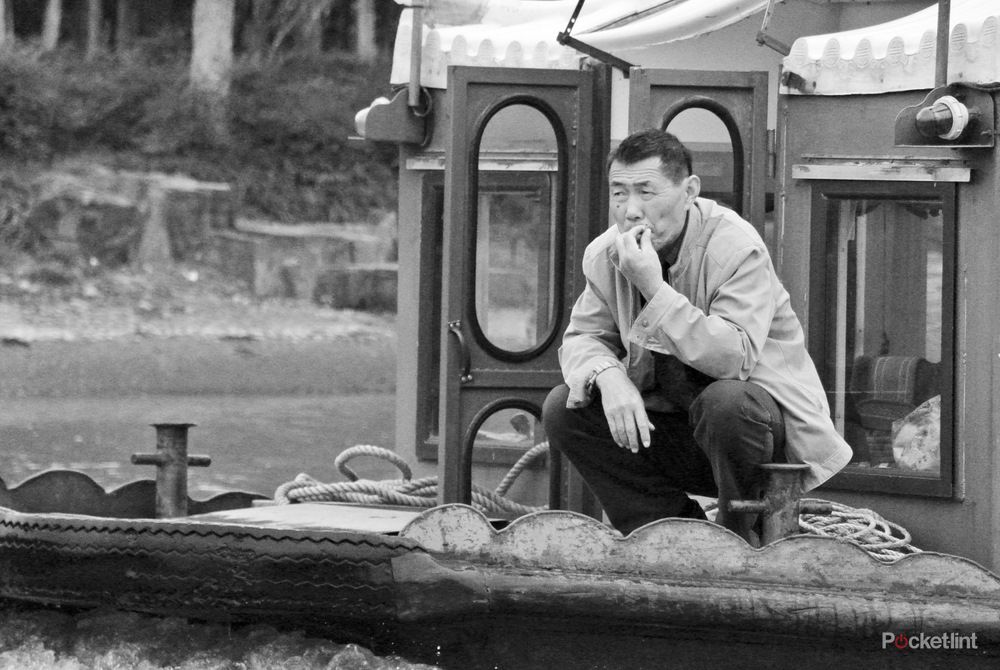The Nikon 1 J1 is the second of Nikon’s new compact mirrorless system cameras featuring a new 10.1-megapixel CX sensor and a new lens mount. Nikon has wisely put ease of use and image quality at the core of this shooter. The J1 is, however, cheaper than the V1, which could make it even more popular, the question is, does the price drop come with a compromise?
Our quick take
The Nikon 1 J1 is a great point and shoot system camera providing ease of use, image quality in a compact body and as with the V1, it represents a bold and brave step by Nikon into the compact, mirrorless system camera market. But while the J1 is significantly less expensive than the V1 it's still not cheap at £549 for the 10-30mm zoom single lens outfit or £699 for the dual lens kit tested here.
These are prices that put this system camera firmly in the realm of some of the larger digital SLR cameras on the market including many of Nikon’s own models and like the V1 it seems to me to be at least a £150 over the odds for the 10-30mm zoom kit, so there’s a premium to be paid for the compactness of this system.
And yet, the camera does what it is designed to do very well and so, while this might not be a camera for everyone, or for those with an understanding bank manager, it’s a viable alternative to the larger system cameras and the other compact system cameras from Olympus and Panasonic offering ease of use and image quality at its heart.
Additional product photography by Chris Hall

Nikon 1 J1 - 4.0 / 5
| FOR | AGAINST |
|---|---|
|
|
The new Nikon 1 system cameras use an all-new CX format CMOS sensor and is distinct from the DX (APS-C sized) and the FX (full frame, 35mm) format sensors Nikon has in the shops already. The J1 is the sibling compact system camera to the V1 we’ve already. Together they represent a milestone in Nikon system camera development.
As with the V1, ease of use, compact design and image quality are the core attributes of this camera. The J1 represents a lower rung on the ladder of this new system, and as such it is less expensive. It does have a few specification tweaks that aim this model at the larger, point’n’shoot end of the market.
It’s worth noting that both cameras are very similar, so much of what has been written about the V1 remains true of the J1 too. This cheaper model features a greater livery range though and is available in white, black, pink, silver (tested here) and red.
The J1’s compact design uses the same fast AF system as the V1 and Nikon claims it is the world’s fastest hybrid AF system. It achieves this by combining phase detection AF and contrast detection on the sensor, alongside a new EXPEED 3 image engine to help deal with all the image and video data this camera can produce.
As with the V1, you get a combination of ultra-fast, full-resolution shooting at up to 60fps. There’s also 1080p, full HD video capture with the possibility of capturing full-resolution stills during recording. The J1 has the same (as the V1) stunning double slow motion modes of 400fps and 1200fps.
The small CX sensor format and 10.1-megapixels resolution help make all that high speed and data processing possible, keep image noise to a minimum and also help maintain image quality. Nikon wanted to combine all these elements in a system that delivers the best balance of image quality, speed, easy use and compact size.
Build, Style and Handling
The J1 weighs just 234g (body only) so is 50g lighter than the V1 and it comes with more or less all the same controls and features as the V1, including a large 921,000-dot, 3-inch colour screen that is as superb to use as the V1’s. Unlike that camera however, the J1 does not have an additional viewfinder, electronic or otherwise and so you’re reliant on the screen on the J1 for all playback and composing tasks.
The build is nicely robust but like the V1 before it, it’s rather blocky looking styling may not be too everyone’s taste but does make the camera nice to hold and use. The double zoom lens kit we were sent to review included the included the 10-30mm F/3.5-5.6 zoom and the 30-110mm F/3.8-5.6 zoom lens. The CX format has a 2.7x magnification factor to apply to these focal lengths meaning the duo of lenses cover a range of 27mm to 297mm in a form factor that is remarkably compact, particularly the 30 to 110mm zoom.
Both lenses are sharp and both benefit from Nikon’s Vibration Reduction (VR) system, which is pretty essential at the longer focal lengths, and as with the V1 the J1’s lenses can fit on V1 and vice versa. However, one thing the J1 lacks is the dust reduction system that sits in front of the V1’s sensor, but this is not the only thing removed to help keep the J1 a less pricy proposition than the V1.
The V1’s accessory port has gone, replaced on the J1 with a rather funky and cleverly designed periscope-style pop-up flash. When switched on via a small switch at the back of the camera on the left side of the monitor, it springs clear of the body by three centimeters. That’s high enough to help prevent problems from redeye that can plague smaller cameras with a flash close to the lens axis. It’s clever and makes sense, but it also means the flash is vulnerable when in its up position to being knocked.
In terms of control, the top plate has three familiar controls from the V1, a shutter, a video capture and a square on/off button, while to the left there’s the flash unit. The lack of the accessory/hot shoe means you cannot use the new SB N5 Speedlight, the ME-1 microphone (though it has built-in microphone) or the new GP-N100 GPS unit.
The J1 can use the 10-100mm Nikkor VR PD-Zoom (power zoom) lens and accepts the Nikon F-Mount adapter so you can take advantage of any existing F-mount lenses you may have, albeit at the expense of the 1 system’s compactness. Interestingly, the camera strap lugs are much nicer than on the V1, being formed as part of the camera body. The camera’s back plate has the same smattering of controls as the V1, in an identical layout in terms of design and functions.
The mode dial has positions for the natty motion snapshot mode, a clever feature that allows you to shoot a series of images with a slice of slow motion video sandwiched in between. There’s Smart Photo Selector, a mode that automatically picks the “right” mode for the scene in front of the lens, and it gets this right mostly too. There are also macro, portrait, landscape options, all being chosen via these controls. However, if in doubt, the cameras defaults to an Auto mode, so it still can hedge its bets but still get you the shot.
Images and video are all stored on SD/SDHC/SDXC cards. This slot is to be found under a flap on the camera base, alongside the battery. It’s worth mentioning that the battery is different to the one found in the V1, an EN-EL20 cell which provides enough juice on a full charge for around 250-shots on our tests. This is less than the V1 largely because the J1 must power the flash and the screen without the relief of a lower powered EVF to help conserve power.
Motion snapshot is great for snapping fleeting action, candid portraits of children or situations where you’re just getting a snap but to have little time to set up to get the shot. It’s a great feature because it starts capturing frames before you fully depress the shutter button. This really helps you get a great shot, where you wouldn’t on an SLR or other compact camera. When photographing people, the smart photo selector worked really well, but overall, all this automation is fast and clever enough to cope with most situations.
The still image position is next and as the name suggests, it’s for “normal” stills capture. But we also have the video capture position where you can shoot full HD video and/or the dual slow motion capture settings accessed via the Function button that sits above a small, rubberised grip pad adjacent the mode dial.
The small zoom control (in playback) to the right of the Function button also controls shutter and aperture settings when in the manual modes. Our one gripe here is its rather small and fiddly to use.
Functions, menus and more
The function button has different contextual menus for each mode. In still image capture you can choose between the electronic, electronic “Hi” and mechanical shutter modes. These two modes bring faster shutter speeds into play for more flexibility in a variety of shooting. However, it has a drawback in that using the electronic “Hi” setting you cannot change drive modes or access other features such as the AF/AE-Lock.
In smart photo selector shooting there’s no additional features in the function button menus. In motion snapshot though you can apply four audio “themes” to the captured images and video, which include: beauty; waves; relaxation and tenderness.
Next to the Function button there’s that fiddly playback zoom button that magnifies images in playback or allows you to view thumbnails in grids of four, nine, 72 and calendar date options. The date view mode is actually really rather helpful.
The lower half of the back plate control panel provides you with a rotating dial for fast scrolling of images in playback and scrolling menus options. It also tilts to activate the self-timer/remote control modes, the auto exposure/auto focus lock system, the exposure compensation control and/or choose an AF mode.
The latter allows you to pick between continuous- and single-shot AF modes, or the rather funky AF area that allows you to move a single AF point around the entire screen. This allows you to focus via any one of the 141 AF points.
There are 41 AF zones that can be employed in “normal” shooting that camera can choose for you. You can override or use combined with Face detection AF, whichever suits you best. Additionally you can choose to use a single, central AF point if all that other flexibility doesn’t work for you.
Four further controls provide playback of shot footage or images as well as direct deletion of stored files. There’s a display toggle button that switches from off to basic and on to full data views. Similarly in playback, the display button will show images uncluttered by any EXIF info, basic data or combine all the data with a smaller thumb of the image, plus a histogram.
The last button is the menu display button. It is here that the meat of this cameras controls reside. To an extent, it’s a rather frustrating experience because while the camera provides a point and shoot experience, the manual controls and other features are all hidden inside the menus.
Thankfully, the menus are simple to use having just three main pages, one each for playback, capture and settings. In each you get a clean scrollable series of options depending on the mode the camera is in (motion snapshot or HD video for example) providing full access to control over the manual shooting options, ISO settings, image quality and shutter type.
Other functions provide ways to adjust metering and white balance, image quality and resolution or RAW and JPEG capture (or both at the same time), you can choose to use Nikon’s accomplished Active D-Lighting system and there’s a interval timer option among other controls.
In playback you can choose to rate or protect images, apply D-Lighting retrospectively to shots or turn off the “rotate tall” command that otherwise spins images shot in the upright format. In the settings section, denoted by a spanner icon, you can get detailed information on the battery, time zone adjustments, HDMI device control for direct output of images in the camera through a complaint HD TV and apply flicker reduction to either 50Hz or 60Hz settings.
But because the manual control options are all within menus, it’s sometimes frustrating to get a grip of. While the cameras ease of use is ideal for snappers out there, if you want to use it in a more serious way, of which it is perfectly capable, you’ll find all the control elements will necessitate frequent revisiting of the menus.
Focus and metering
The Nikon 1 system’s hybrid focusing system is very fast indeed. While using the camera, the speed is not immediately obvious, but once you start shooting fast moving subjects you quickly realise that there are not many missed opportunities due to focus errors.
The TTL metering system is also sensor-based and uses the usual matrix, centre-weighted and spot modes that provide a great balance for most shots. We found the matrix system struggled in some of flat lighting, underexposing too often while the centre-weighted option was about the best balance overall. Spot metering uses a 2mm central circle of the selected AF zone, but given the size of the sensor we found the spot to be too large for very fine control of the point you wish to meter from.
Image and Video Quality
With such a relatively small sensor, the choice Nikon made to keep the resolution to the 10-megapixel mark was a good one both in terms of the speed the camera’s performance and in terms of image noise issues. The CX CMOS sensor surely benefits from everything Nikon has learnt from its FX and DX sensor cameras. Even shooting at the top sensitivity setting of 3200, noise is well controlled but at the expense of significant amounts of detail. Meanwhile the RAWs reveal more detail but noise too. Shooting at ISO 3200 should be considered a last resort.
However, up to ISO 800 shots are remarkably clean and detailed with ISO 1600 shots only slightly less so. Metering is good overall while in terms of the white balance control, things look very good indeed, with mixed lighting being handled well.
Detail is good and all the lenses (including the 10mm prime from the V1, the 10-30mm and the 30-110mm zooms) proving suitably sharp. JPEGs are equally soft as those from V1, so sharpening in software helps out here. Colour reproduction tends to be muted in the “standard” setting with vivid providing a bit more punch and like the v1, bright point sources of light lost detail even using the D-Lighting system pre and/or post shooting.
The HD video capture is similar in all respects to the V1 with moving image being detailed and sharp, though jerky in playback, and the built-in microphone is not going to flatter a surround system but is adequate for most uses in all but windy conditions.
The 400fps five-second slow motion mode provides video with 640x240-pixels and is gives a wonderful ethereal quality with a near-3D feel. The resolution means it’s only really large enough for use on a computer screen, and it’s not going to impress 1080p fans, but it’s fun and offers an entirely new perspective on action shots. Ditto the 1200fps video mode. Here resolution drops to just 320x120-pixels and so lacks detail and true finesse, and yet seeing action at such slow speeds is super.
In terms of sharpness, the J1 creates crisp images with all the lenses - though the full zoom setting of the 30-110mm lens is a little soft around the edges - while the AF can easily hold its own with the AF on larger DSLRs, even ones from Nikon. However, lower light performance can become less accomplished although the greater depth of field afforded this camera by dint of its smaller sensor helps to iron out some focus errors, which is a help to those simply "snapping".
Given Nikon’s stated aims however, and the type of user this system is designed for, the image and video quality is more than adequate and can be simply superb in favorable conditions
To recap
The Nikon 1 J1 is a more affordable alternative to the V1 and is as bold and brave a step by Nikon into the compact, mirrorless system camera market. And while the J1 provides all of what Nikon wants, it’s still a rather expensive option.








